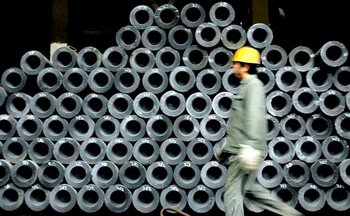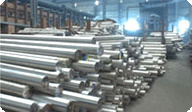
SINO-US TRADE ties are tempestuous in good times, but amid the ongoing recession in the latter’s market, frictions often have a way of quickly turning ugly and translating into new or enhanced duties on imports.
Washington’s recent imposition of 145% tariffs on Chinese steel pipe imports is the latest salvo in this critical but often fractious bilateral trade relationship. As it affects some 2.8 bln usd in products from China it becomes the largest trade dispute for steel in US history, according to the Chinese-language China News Net.
While both sides recognize and publicly acknowledge the need to seek ways to reduce commercial disputes, the trade balance as it stands is unsustainable as the value of Chinese exports to the US exceeds that of American goods sold in China by a factor of six of seven times.
And with such a huge amount of exports affected, look to see listed Chinese steelmakers like Baosteel, Wuhan, and Hong Kong-listed Maanshan appealing to Beijing to help cushion the blow.
Several US steel producers along with the United Steelworkers Union began arguing for the duties in April 2009, arguing that China was dumping steel pipes in the US at below-market prices.
The US side also accused several Chinese producers of directly benefiting from subsidies from Beijing.
Their arguments were convincing enough for the US International Trade Commission to agree to a preliminary imposition of the tariffs, meant to offset what it says are Chinese government subsidies to its domestic steel mills.
The US Department of Commerce will decide this April whether to levy additional anti-dumping tariffs on the products, which would bring the total duties on Chinese-made steel pipes to 145%.
Not only is this the biggest trade action taken in US steel industry history, but also would be the largest such move directed against China.

Photo: Internet
The affected pipes are used to move petroleum products, and the new duties will take effect immediately.
The US side said that not only Chinese government subsidies for its steelmakers, but a recent surge in steel pipe imports from that country had led Washington to opt for the record high duties.
According to US trade statistics, China exported some 2.74 bln usd worth of the affected goods to the US in 2008, triple the value from the previous year.
This led the US Department of Commerce to approve the new restrictions on Chinese imports, signing off on the preliminary 114% to 145% anti-dumping tariffs.
The department will make its final ruling in April, after which the US ITC will have two months to make its final ruling.
According to statistics, since taking office in January 2009, the Obama administration has launched at least 10 anti-dumping investigations against Chinese imports. The report did not provide numbers on how this compared to the George W. Bush administration.
Each time, without fail, Beijing has responded that it is “very dissatisfied” with the respective move, and warned that the acts represented “protectionism” and were a “barrier to free trade.”
Named in the US Department of Commerce announcement were a handful of Chinese steel pipe producers, but it is not known if the list represents all mills affected by the new duties.
They include Ningbo Kowloon Machinery, Zhonggang Group, Ningbo Lihong, Ningbo Haitian and Yantai New Technology.
The US side has argued that steel pipe imports from these named firms and others benefit from illegal government subsidies, are sold at below-market prices in the US, and have caused verifiable damage to the US steel industry.
However, at least one of the named producers is seeing natural market forces cut into its exports to the US.
“In 2008, the US accounted for 70% of our exports, but due to diminished demand there, this ratio fell to around 50% in 2009,” the report cited a company insider with Ningbo Kowloon Machinery as saying.

